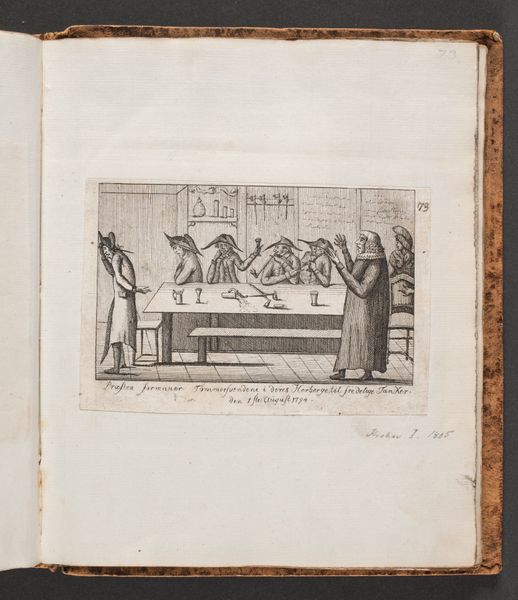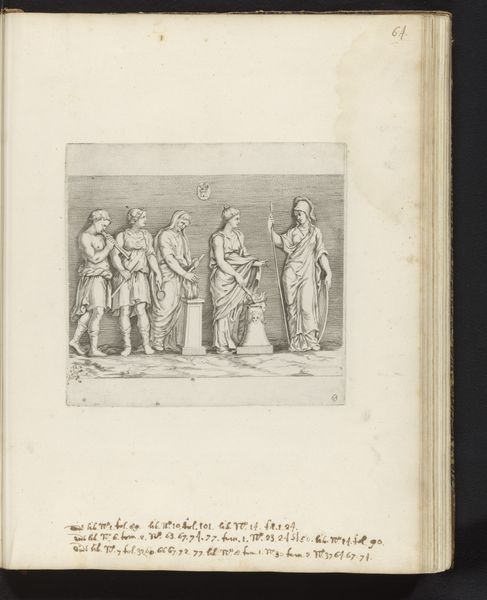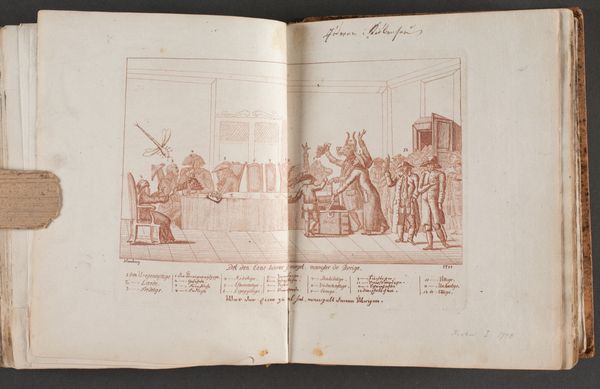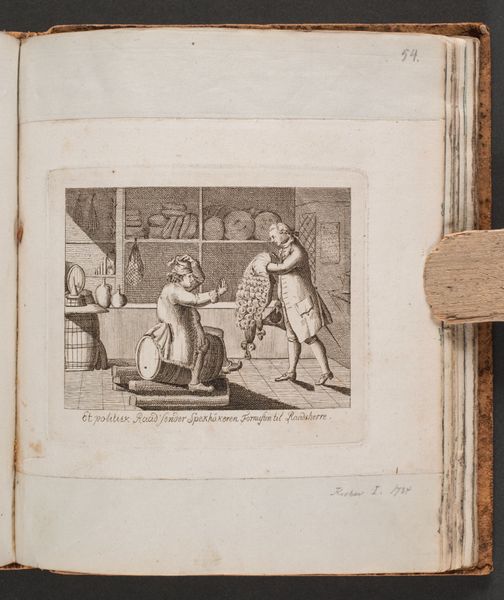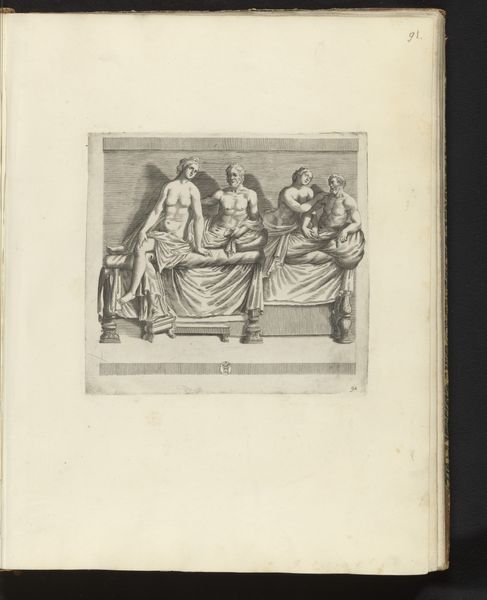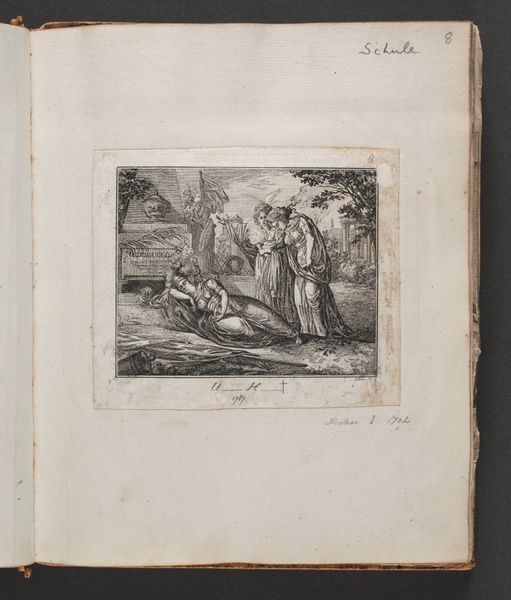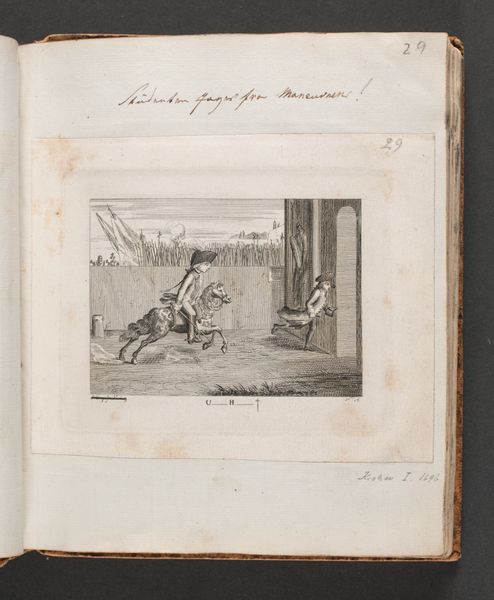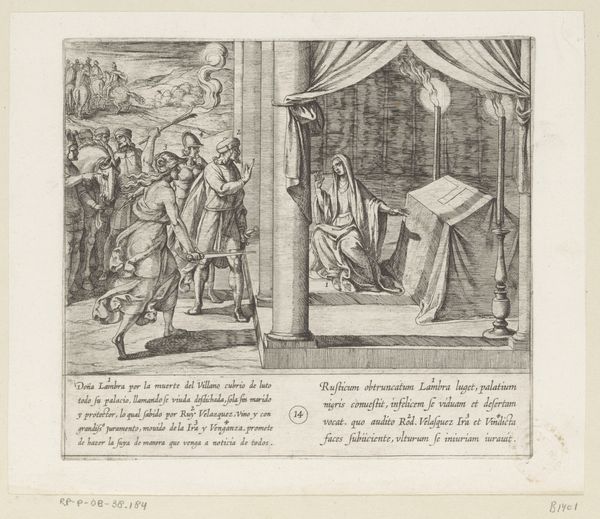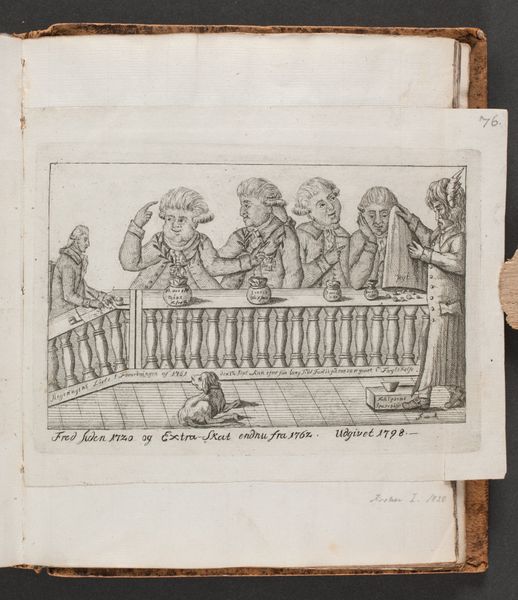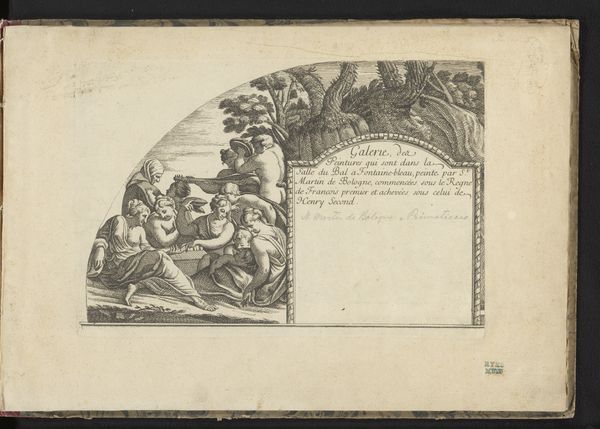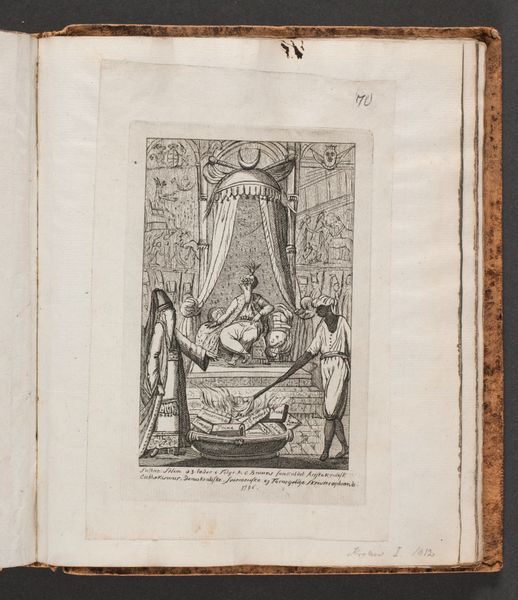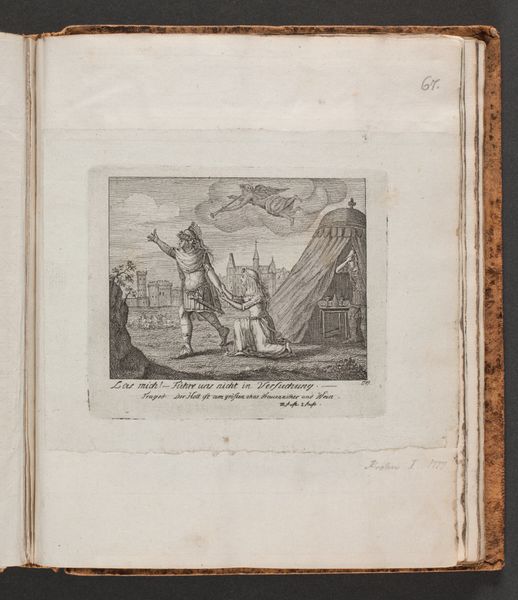
drawing, print, etching, paper, ink
#
drawing
#
narrative-art
# print
#
etching
#
paper
#
ink
#
genre-painting
#
history-painting
Dimensions: 95 mm (height) x 137 mm (width) (plademaal)
Editor: Here we have an etching from 1795 called "Tvende Præsters Godgørenhed…" Its artist is anonymous. It's created with ink on paper. The mood feels…constrained, maybe? A transaction of some kind seems to be happening, and I’m curious about the power dynamics at play. What's your take? Curator: Well, looking at this from a materialist lens, it's important to consider the very production of prints and drawings like these in the late 18th century. Who was commissioning these images? Who was distributing them, and for what purpose? Editor: So you're thinking about it as a commodity already, designed for a certain kind of consumption? Curator: Exactly. Paper wasn't cheap. Ink had to be formulated. The etching process itself required skill and time. Was this intended to be mass-produced and widely disseminated, perhaps to shape public opinion regarding the Church? Note the detail in the garments. The stark contrast between the well-dressed clergy and the downtrodden figures highlights class divisions through material signifiers. Consider how the printing press changed access to information and the role of images in social critique. Editor: I hadn't thought about the production costs creating another layer to the statement, beyond the immediate narrative. How does that relate to its categorization as “genre painting” and “history painting?” Curator: The artist blurs those lines. It's seemingly a specific scene – the charity of two priests. However, through its medium and circulation, it participates in larger historical narratives about power, poverty, and social responsibility. Were these works commissioned and controlled or were they more freely produced and intended to be a catalyst for change? What might its production say about societal opinions toward religion in 1795? Editor: That's fascinating. Considering the economic factors, this simple drawing opens up so many questions about its role in society at the time. Curator: Indeed. By considering its materials, methods of production, and intended audience, we move beyond simple aesthetics and begin to understand art as an active participant in shaping historical realities.
Comments
No comments
Be the first to comment and join the conversation on the ultimate creative platform.
